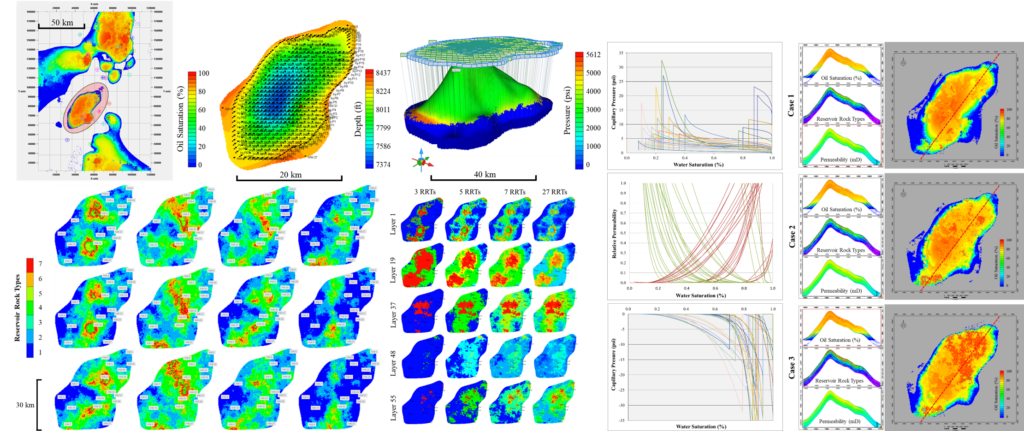A hierarchical carbonate reservoir benchmarking case study for reservoir characterisation, uncertainty quantification & history matching by Jorge Costa Gomes, Sebastian Geiger, Daniel Arnold
COSTA MODEL: Hierarchical carbonate reservoir benchmarking case study
An Open Access Carbonate Reservoir Benchmarking Study for Reservoir Characterisation, Uncertainty Quantification & History Matching
Petroleum Geoscience, https://doi.org/10.1144/petgeo2021-067

Abstract:
“This work presents a new open-source carbonate reservoir case study, the COSTA model, that uniquely considers significant uncertainties inherent to carbonate reservoirs, providing a far more challenging and realistic benchmarking test for a range of geo-energy applications. The COSTA field is large, with many wells and large associated volumes. The dataset embeds many interacting geological and petrophysical uncertainties in an ensemble of model concepts with realistic geological and model complexity levels and varying production profiles. The resulting number of different models and long run times creates a more demanding computational challenge than current benchmarking models.
The COSTA model takes inspiration from the shelf-to-basin geological setting of the Upper Kharaib Member (Early Cretaceous), one of the most prolific aggradational parasequence carbonate formations sets in the world. The dataset is based on 43 wells and the corresponding fully anonymised data from the north-eastern part of the Rub Al Khali basin, a sub-basin of the wider Arabian Basin. Our model encapsulates the large-scale geological setting and reservoir heterogeneities found across the shelf-to-basin profile, into one single model, for geological modelling and reservoir simulation studies.
The result of this research is a semi-synthetic but geologically realistic suite of carbonate reservoir models that capture a wide range of geological, petrophysical, and geomodelling uncertainties and that can be history-matched against an undisclosed, synthetic ‘truth case’. The models and dataset are made available as open-source to analyse several issues related to testing new numerical algorithms for geological modelling, uncertainty quantification, reservoir simulation, history matching, optimisation and machine learning.”
